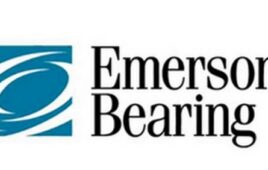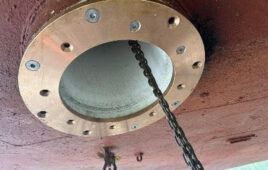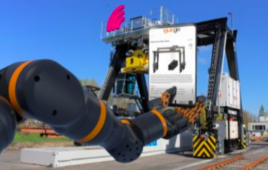John R. Bacher, Bearings Manager – Primetals Technologies USA LLC
Nearly every machine or device that has rotating components make use of either a rolling element or sleeve bearing. Rolling element bearings basically consist of one or more inner and outer rings with a set of rollers or balls that roll between the inner and outer rings to allow rotation to occur easily.
Bearings used in harsh conditions or environments should be inspected on a regular basis to ensure that there is not any internal damage that could develop or progress further and in order to keep your bearings and equipment operating properly. Periodic inspection of bearings from your equipment can help prevent downtime by identifying potential problems in advance. Bearing repair facilities can help inspect, repair and restore your bearings so you are able to receive more life from them. Facilities such as the one at Primetals Technologies in Warren, Ohio are available to help inspect bearings and repair them to like new condition.
Every rolling element bearing tells a story when you look at its internal components after it has been used in an application. The inside of a bearing can display
existence of conditions such as excessive thrusting, misalignment within your equipment, improper
bearing fits, water or moisture ingress and improper lubrication. You can better troubleshoot, service and maintain your equipment if you can identify what the problems and potential problems are.
The pictures shown will help identify some of the common damages that you may see within your bearings and will help identify the cause to address.
 Peeling (Smearing)
Peeling (Smearing)
Description
Cluster of very small shallow spalls (microspalling) on the surface
Rough patch in appearance
Causes
Poor lubrication characteristics where the absence of fluid film allows metal to metal contact between the rolling elements and the raceway
Roller rapid acceleration on entry into the load zone resulting in sliding
Rotation of the bearing too quickly under heavy loadPreventative action
Use a more suitable lubricant for your application
Reduce bearing internal clearance
 Flat Spotting
Flat Spotting
Description
Flat wear line across roller bodies
Causes
Severe roller sliding when entering the load zone
Preventative action
Viscosity of grease is too thick or the bearing is overpacked
 Particle Denting
Particle Denting
Description
Small dents in raceway or roller bodies
Causes
Trapped particles in the bearing which could be from internal (fatigue spalled or chipped components) or external (inadequate sealing) sources
Preventative Action
Nothing can be done if the denting is caused from fatigue spalling or chipped or damaged components
Better seal maintenance or adding a seal if the result is caused from external sources
 Abrasive Wear
Abrasive Wear
Description
Rough sand blasted appearance
Causes
Contaminant in lubrication
Typically introduced into the bearing from water ingress due to worn seals
Preventative Action
Better seal Maintenance
 Staining/Etching
Staining/Etching
Description
Grayish marking on surfaces of raceway and roller bodies
Causes
Water ingress or moisture in the lubricant
Preventative Action
Better seal maintenance
 Heat Discoloration
Heat Discoloration
Description
Dark surface color, generally brown to blue
Bearing components that have reached temperatures that allow them to discolor are not repairable because they have lost their hardness
Causes
Wash out of lubrication or lubrication loss causing severe friction resulting in internal heat generation
External heat sources acting on the bearing
Preventative Action
Ensuring that bearing has adequate lubrication, seal and other maintenance measures have been followed
 Brinelling
Brinelling
Description
Rolling element spaced indentations in the raceway
Causes
Heavy thrusting force on the bearing which causes the rolling elements to leave indentations in the raceway
The races that display this condition indicate the direction that the thrusting occured.
Preventative Maintenance
Ensure that the bearing races are secured properly
Check equipment for anything that may be loose, broken or not
 Fatigue Spalling (Flaking)
Fatigue Spalling (Flaking)
Description
Flaked surface appearance, typically but not always occuring in the load zone
Bearings are not repairable once they reach this point
Causes
End of bearing life due to reaching the fatigue load limit
Radially or axially overloading
Untreated denting, deep seated surface rust, etching or peeling
Incorrect fit
Preventative Action
Routine bearing maintenance can prolong the life of your roller bearing but it will eventually reach its fatigue load limit regardless
Large bearings tend to be expensive to purchase new and long lead times of new bearings can make a downtime situation worse. Many users of large bearings tend to keep spare bearings on hand and during maintenance intervals send the used bearings for inspection and potential repair. Bearing repairs tend to be much less costly versus a new bearing and the lead time is also much less.
Bearings of every type and from every industry can be repaired. Factors such as size, repair history, application and preventative maintenance interval can dictate number of repairs possible before having to replace a bearing with a new one. Some repaired bearings can also be outfitted with new races as components eventually wear out. Bearing repairs can be as light as a polishing throughout to grinding of race surfaces and assembling with new rolling elements to new bearings or new race components. Each customer is different and so are their repair needs and requirements.
Typically bearing repairs fall into one of the following work scopes:
Clean & Inspect
This type of repair option involves a thorough cleaning with hot water & detergent, visual inspection and dimensional measurement of all components, and any clearance checking and adjustment as needed.
Polish
Clean and inspect, damage analysis and polish all components as accessible.
Minor Repair
Clean and inspect, damage analysis, polish of cone / roller sub-assembly as accessible and grinding of cup raceways. This repair option is specifically for tapered roller bearings.
Rebuild
Clean and inspect, damage analysis, raceway grinding of inner and outer raceways, a new set of rollers and replacement of pins if needed (if the bearing has a pin type cage).
Major Rebuild
Clean and inspect, damage analysis, make a new replacement component(s), a new set of rollers, and replacement of pins if needed (if the bearing has a pin type cage).
Miscellaneous Work, Seals, and O-Rings
This type of repair option includes replacing seals and o-rings, grinding of cup or cone spacers and packaging for long term storage.
Manufacture New Bearing
This option includes engineering, design, and manufacture of a complete new bearing
Primetals Technologies USA
www.primetals.com
Filed Under: Bearing Tips




